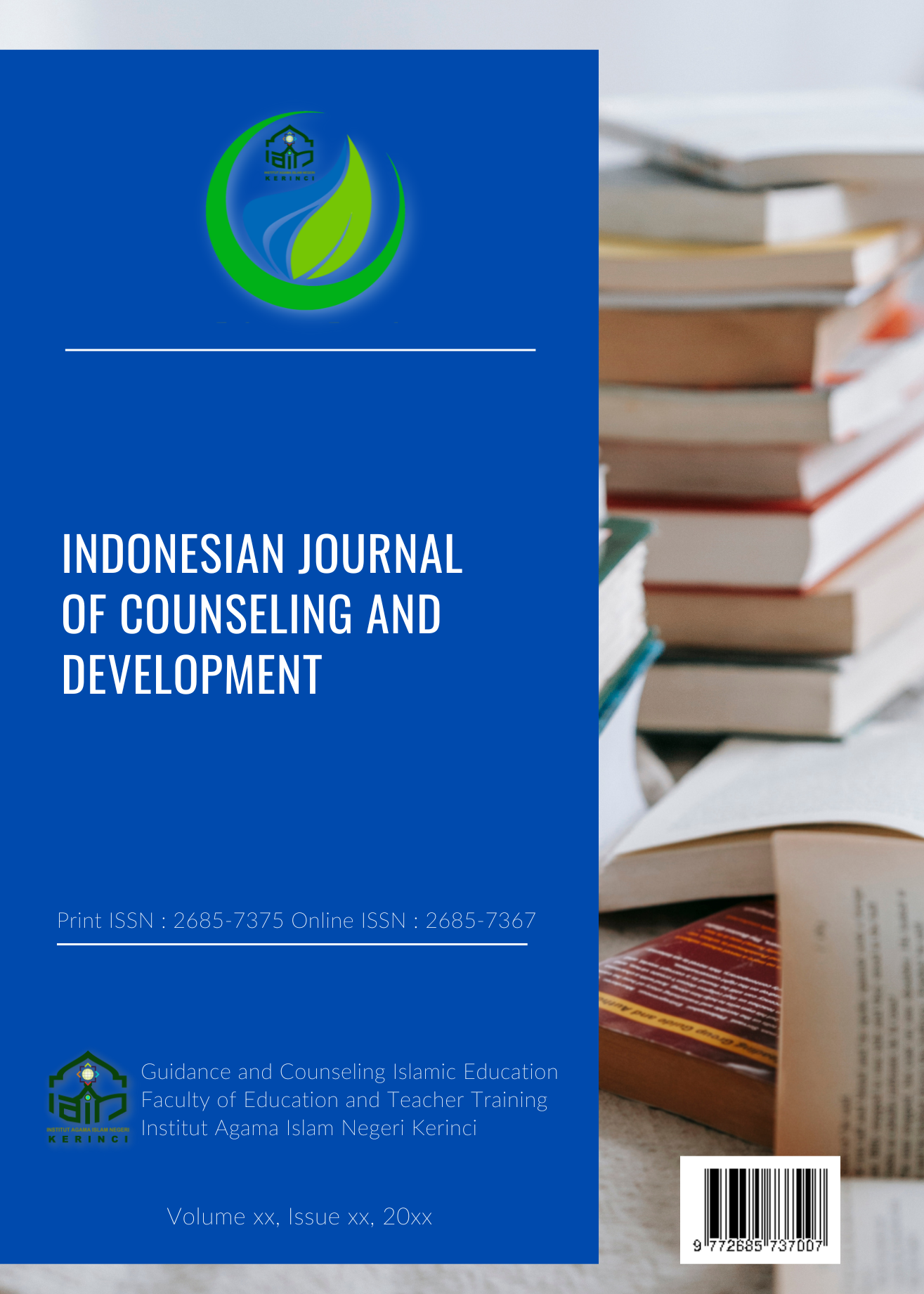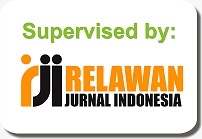Adaptation of the Student Engagement Questionnaire (SEQ) into Indonesian Version for Secondary School Students
Abstract
The goal of this research is to adapt the Student Engagement Questionnaire (SEQ) into the Indonesian version. The assessment that is adapted is the Student Engagement Questionnaire (SEQ) formulated by Reeve & Tseng, which consists of 22 items across four dimensions: agentic, behavior, emotion, and cognitive. The adaptation procedure follows the International Test Commission (ITC) Guidelines for Translating and Adapting Tests. The sequence consists of six stages: (1) Initial development; (2) Test construction; (3) Validation; (4) Administration; (5) Scoring and interpreting; (6) Documentation phase. However, this study only reached the scoring and interpreting stage. Therefore, future researchers should continue similar studies through to the documentation stage. In this research, 2 translators, 2 psychometrics experts for content validation, 10 Islamic Junior High School students for readability assessments, and 385 Islamic Junior High School students for construct validation of the instrument are involved. The content validity test resulted in a total mean of 1.34 for the similarity aspect and 1.3 for the comparability aspect, with a s-CVI value of 1.00. The construct validity test, conducted using CFA, yielded results with CFI 0.931, TLI 0.922, RMSEA 0.062, and SRMR 0.045. Furthermore, the Cronbach's Alpha value was obtained at 0.94. Therefore, this instrument has been demonstrated to be both valid and reliable for assessing student engagement
Downloads
References
Bakadorova, O., Lazarides, R., & Raufelder, D. (2020). Effects of Social and Individual School Self-Concepts on School Engagement During Adolescence. European Journal of Psychology of Education, 35(1), 73–91.
Cruchinho, P., López-Franco, M. D., Capelas, M. L., Almeida, S., Bennett, P. M., Miranda da Silva, M., ... & Gaspar, F. (2024). Translation, cross-cultural adaptation, and validation of measurement instruments: a practical guideline for novice researchers. Journal of Multidisciplinary Healthcare, 2701-2728.
Dadi, A. F. P., & Kewa, M. (2020). Penerapan Model Pembelajaran Time Token dalam Upaya Meningkatkan Keaktifan Belajar PPKn Peserta Didik di Sekolah Dasar. Jurnal Basicedu, 5(1), 357–366.
Davis, L. L. (1992). Instrument Review: Getting the Most from a Panel of Experts. Applied Nursing Research, 5(4), 194–197.
Doğan, U. (2014). Validity and Reliability of Student Engagement Scale. Bartın Üniversitesi Eğitim Fakültesi Dergisi, 3(2), 390–390.
Eren, A., & Rakıcıoğlu-Söylemez, A. (2020). Language Mindsets, Perceived Instrumentality, Engagement and Graded Performance in English as a Foreign Language Students. Language Teaching Research, 27(3), 544–574.
Fikra, H. (2023). Adaptasi Alat Ukur Effect Intensity Measure Questionnare (AIM-Q) Versi Indonesia. Gunung Djati Conference Series, 28, 48–59.
Fredricks, J. A., Blumenfeld, P. C., & Paris, A. H. (2004). School Engagement: Potential of the Concept, State of the Evidence. Review of Educational Research, 74(1), 59–109.
Fredricks, J. A., Reschly, A. L., & Christenson, S. L. (Eds.). (2019). Handbook of student engagement interventions: Working with disengaged students. Academic Press.
Hair, J., & Alamer, A. (2022). Partial Least Squares Structural Equation Modeling (PLS-SEM) in Second Language and Education Research: Guidelines using an Applied Example. Research Methods in Applied Linguistics, 1(3), 100027.
Hart, S. R., Stewart, K., & Jimerson, S. R. (2011). The Student Engagement in Schools Questionnaire (SESQ) and the Teacher Engagement Report Form-New (TERF-N): Examining the Preliminary Evidence. Contemporary School Psychology, 15(1), 67–79.
Khairi, M. I., Susanti, D., & Sukono, S. (2021). Study on Structural Equation Modeling for Analyzing Data. International Journal of Ethno-Sciences and Education Research, 1(3), 52–60.
Lavy, S., & Naama-Ghanayim, E. (2020). Why care about caring? Linking teachers’ caring and sense of meaning at work with students’ self-esteem, well-being, and school engagement. Teaching and Teacher Education, 91, 103046.
Lenaini, I. (2021). Teknik Pengambilan Sampel Purposive dan Snowball Sampling. Jurnal Kajian, Penelitian & Pengembangan Pendidikan Sejarah, 6(1), 33–39.
Matius, A., & Gunawan, W. (2022). Validitas dan Reliabilitas Perceived Future Employability Scale untuk Dewasa Muda. Psikologika: Jurnal Pemikiran Dan Penelitian Psikologi, 27(1), 23–46.
Maulana, A. (2022). Analisis Validitas, Ralibilitas, dan Kelayakan Instrumen Penilaian Rasa Percaya Diri Siswa. Jurnal Kualita Pendidikan, 3(3), 133–139.
Nuralim, Rizky, M. S., & Aguspriyani, Y. (2023). Teknik Pengambilan Sampel Purposive dalam Mengatasi Kepercayaan Masyarakat pada Bank Syariah Indonesia. MUSYTARI: Neraca Manajemen, Ekonomi, 3(1), 1–5.
Octavia, S. A. (2020). Model-Model Pembelajaran. Deepublish Publisher.
Prananto, K. (2025). Uji Psikometrik Skala University Student Engagement Inventory (USEI) Versi Bahasa Indonesia: Validitas dan Reliabilitas pada Mahasiswa di Indonesia. Humanitas (Jurnal Psikologi), 9(1), 41–56.
Putri, C., Kusumapratiwi, K., & Meilinda, P. (2024). Studi Deskriptif School Engagement pada Siswa SMK “ X ” di Kota Bandung. 6(1), 62–70.
Putri, C., Savitri, J., & Rohinsa, M. (2023). Pengaruh Parent Involvement dan Academic Self-Concept terhadap School Engagement dalam Situasi Pandemi Covid-19 pada Siswa SMK “X” di Kota Bandung. Jurnal Penelitian Dan Pengukuran Psikologi: JPPP, 12(1), 44–51.
Reeve, J., Cheon, S. H., & Jang, H. (2020). How and why students make academic progress: Reconceptualizing the student engagement construct to increase its explanatory power. Contemporary Educational Psychology, 62, 101899.
Reeve, J., & Shin, S. H. (2020). How Teachers Can Support Students’ Agentic Engagement. Theory Into Practice, 59(2), 150–161.
Reeve, J., & Tseng, C. M. (2011). Agency as a Fourth Aspect of Students’ Engagement During Learning Activities. Contemporary Educational Psychology, 36(4), 257–267.
Rosita, E., Hidayat, W., & Yuliani, W. (2021). Uji Validitas dan Reliabilitas Kuesioner Perilaku Prososial. 4(4), 279–284.
Sa’diah, H., Rohaeti, E., & Septian, M. R. (2024). Uji Kelayakan Modul Berbasis Self Hep Book terhadap Motivasi Belajar Siswa SMPN 1 Ciracap. FOKUS (Kajian Bimbingan & Konseling Dalam Pendidikan), 7(3), 248–254.
Sperber, A. D. (2004). Translation and Validation of Study Instruments for Cross-Cultural Research. Gastroenterology, 126(1), 124–128.
Sperber, S., Wahl, M., Berger, F., Kamp, H., Lemke, O., Starck, V., ... & Ravenzwaay, B. V. (2019). Metabolomics as read-across tool: An example with 3-aminopropanol and 2-aminoethanol. Regulatory toxicology and pharmacology, 108, 104442. Stratton, S. J. (2024). Purposeful Sampling: Advantages and Pitfalls. Prehospital and Disaster Medicine, 39(2), 121–122.
Suriani, N., Risnita, & Jailani, M. S. (2023). Konsep Populasi dan Sampling serta Pemilihan Partisipan Ditinjau dari Penelitian Ilmiah Pendidikan. Jurnal IHSAN : Jurnal Pendidikan Islam, 1(2), 24–36.
Suryadi, T., Alfiya, F., Yusuf, M., Indah, R., Hidayat, T., & Kulsum, K. (2023). Content Validity for the Research Instrument Regarding Teaching Methods of the Basic Principles of Bioethics. Jurnal Pendidikan Kedokteran Indonesia: The Indonesian Journal of Medical Education, 12(2), 186–202.
Trinh, G. T. T. (2024). Examining the impacts of out-of-class student engagement on student competencies in the context of business students in Vietnam–evidence from universities in Hanoi. Journal of Applied Research in Higher Education, 16(2), 446-468. Umar, J., & Nisa, Y. F. (2020). Uji Validitas Konstruk dengan CFA dan Pelaporannya. Jurnal Pengukuran Psikologi Dan Pendidikan Indonesia, 9(2), 1–11.
Utari, D., & Lestari, R. (2022). Metode Adaptasi Lintas Budaya Instrumen Kidscreen-27 di Asia: Integrative Review. Jambura Journal of Health Science and Research, 5(2), 474–484.
Veiga, F. H. (2016). Assessing Student Engagement in School: Development and Validation of a Four-dimensional Scale. Procedia - Social and Behavioral Sciences, 217(351), 813–819.
Xu, X., Shi, Z., Bos, N. A., & Wu, H. (2023). Student engagement and learning outcomes: an empirical study applying a four-dimensional framework. Medical Education Online, 28(1), 2268347.
Yandri , H., Juliawati, D., Valdez, A. V., Yuzarion, Y., Rasmita, R., Daflaini, D., Fidya , Y., (2025). An Islamic Spiritual Response to the Psychological Effects of Loneliness, Academic Stress, and Bullying on Students in Islamic Boarding Schools (Pesantren). Psikis: Jurnal Psikologi Islami, 11(1), 137-149. https://doi.org/10.19109/psikis.v11i1.27855
Yusoff, M. S. B. (2019). ABC of Content Validation and Content Validity Index Calculation. Education in Medicine Journal, 11(2), 49–54.
Copyright (c) 2025 Usrotun Diniyah, Nur Hidayah, Yuliati Hotifah

This work is licensed under a Creative Commons Attribution 4.0 International License.








